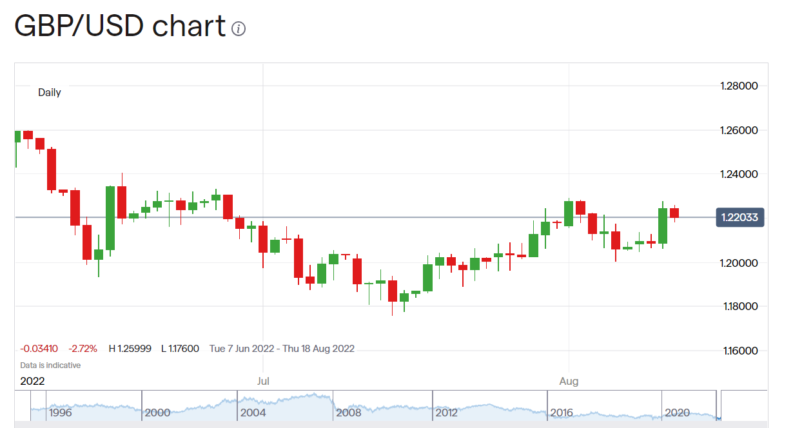Key points:
- The US CPI came in at 0% for July
- Will this strengthen or weaken the USD rate?
- That depends upon the time scale we wish to consider
Given the US CPI coming in at 0% for July it's worth having a look at what actually decides foreign exchange rates. For relative inflation rates are taken to be – by economists at least – the long term driver of changes in FX rates. The reason the Swiss Franc (CHF) has gone from 5 to a US dollar (USD) to a near 1:1 over much of the past century really is because the American inflation over that period of time has been 5 times that in Switzerland. So, given that US inflation is moderating more and earlier than UK or European then what should that tells us about the FX pairs, USD/EUR and USD/GBP?
The answer there being not a lot in fact. Because the economists are talking about the long term when they say that relative inflation rates are what matter – in fact, relative inflation rates determine FX rates. The long term here being decades. Given that we're not going to have FX positions open for decades that's not a great deal of use to us. Sure, when inflation rates are approaching 100% – say in Turkey currently, so with respect to USD/TRY – then those relative inflation rates are going to be the dominant influence over months, not decades. But we need a big inflation rate for it to be that dominant influence in the timspan of a likely trading position.
At the other end of the pricing scale, by the pip, FX rate movements are random. This is true at the microscale of any price in financial markets. We simply do not know what the next price move is going to be at that scale. We've got good ideas about basis points, but pips are random.

Also Read: Learn To Trade Forex in 2022
It's in the interim period, beyond seconds and less than decades, that interest rates become the dominant influence upon exchange rates. There is still the influence of what people think inflation rates will be of course, but that takes backseat to interest rates. At which point we can explain much of the dollar's rise against sterling and the euro in recent months. The Federal Reserve is earlier in the cycle of raising interest rates therefore the dollar is rising against those later in the cycle. At some point this will reverse and someone will be first to start lowering rates again – which is when we might expect the next turmoil in FX rates.
This doesn't change those hour by hour movements, they still work at their own microscale. It also doesn't change the decades long process of adjusting to relative inflation rates – except for the influence interest rates have upon inflation of course.
This is, of course, very basic. But it's also a useful guide to what economics has to say about what influences foreign exchange rates. It's in this order, random, interest rates, inflation. The order being determined by the size of movement and time period we're talking about.
